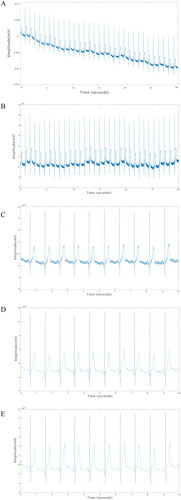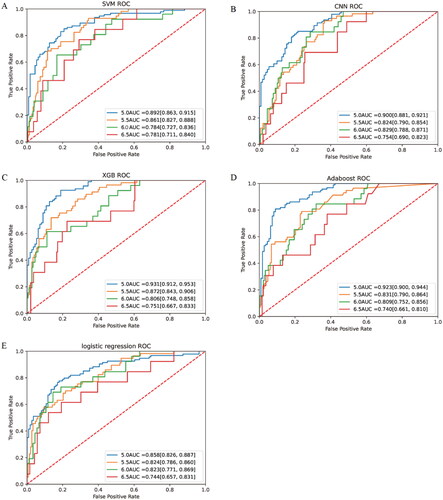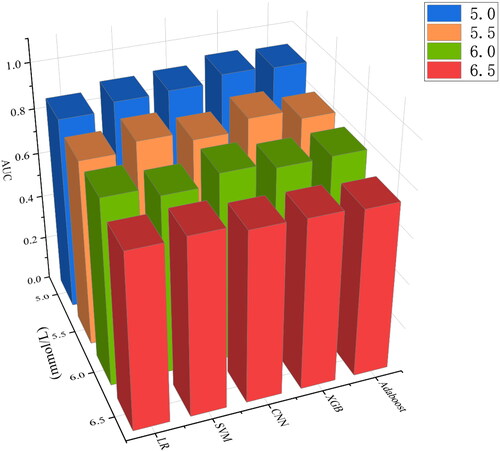Figures & data
Figure 1. A preprocessing is required for the original ECG to become analyzable. (A) The original ECG. (B) ECGs after correction for mild baseline drift by polynomial fitting. (C) ECG after the second baseline correction. (D) ECG after wavelet transform. (E) ECG after bandpass filters.

Table 1. Characteristics of 80 patients.
Table 2. Performance of different models at different serum potassium concentration thresholds.




